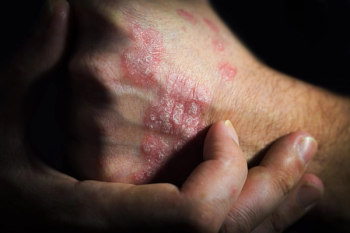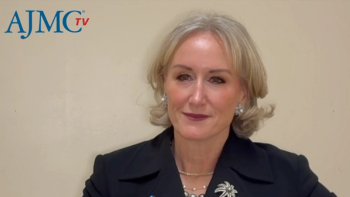
Homelessness Is a Health Crisis: The Urgent Need for Housing and Care Reform
Key Takeaways
- Homelessness is driven by structural factors like affordable housing shortages and income inequality, with individual vulnerabilities increasing personal risk.
- Health issues are both a cause and effect of homelessness, leading to higher acute care and mortality rates among the unhoused.
Solutions depend on listening to individuals with lived experience, rebuilding trust, and recognizing the humanity of every patient, experts say.
As rates of homelessness rise in the US, experts are calling for urgent reforms that recognize housing as a core component of health care. Each night, nearly 800,000 individuals are unhoused across the country, including more than 187,000 in California alone.1
The Fran Comi keynote lecture at the
Drivers vs Precipitants
Understanding homelessness requires separating 2 distinct questions that are often mistakenly conflated: why are so many people in a particular region unhoused, and why does a specific individual end up without shelter? The first is a question of structural forces, while the second involves individual vulnerabilities.
Margot Kushel, MD, professor of medicine at the University of California, San Francisco, explained that structural drivers like the availability of affordable housing and levels of income inequality largely determine the overall rate of homelessness in a community. Meanwhile, personal vulnerabilities such as substance use and mental illness can contribute to an individual’s risk.
Nationwide, only 36 affordable housing units exist for every 100 extremely low–income households, defined as those earning below 30% of the area median income.2 In California, that figure drops to 24, leaving the state 1 million units short. Although California makes up 12% of the US population, it accounts for nearly 25% of the nation’s unhoused individuals. Even in states with greater housing availability—only 11 states have more than 45 accessible units per 100 needed—more than 60% of low-income renters still face severe cost burdens.
“You can draw a beautiful linear line between the availability of housing that's affordable for the lowest income households in a community, and the rate of homelessness in that community,” Kushel said.
The Health Toll of Homelessness
Housing insecurity is both a cause and consequence of poor health. According to data from the California Statewide Study of People Experiencing Homelessness,45% of unhoused Californians with a median age of 47 years reported fair or poor health—a rate 3 times higher than their housed counterparts.3 A quarter of respondents had asthma or chronic obstructive pulmonary disease, 7% had cancer, and 70% reported current cigarette use, with more than half smoking daily, and nearly 1 in 4 began using illicit drugs only after becoming homeless.
While 83% had some form of health insurance, mostly Medicaid, only half reported having a regular source of outpatient care. In the past year, 61% saw a provider, but 39% visited the emergency department and 22% were hospitalized in just the past 6 months. Only 10% of those with regular substance use received treatment, and often through low-evidence settings.
Patients experiencing homelessness are hospitalized more frequently, have longer stays, and are more difficult to discharge due to limited access to recovery supports.1 Mortality rates are significantly higher: 4 to 5 times higher for older adults and 8 to 11 times higher for younger adults compared with the general population.
“Homelessness is absolutely devastating to health with high rates of acute care and mortality,” Kushel said. “But health care systems have an important role to play and should operate in close partnerships with homelessness and housing systems.”
California’s Policy Response
California is taking steps to embed housing within the health system through its Action Plan for Preventing and Ending Homelessness.4 Corrin Buchanan, undersecretary of the California Health and Human Services Agency, described a series of initiatives that include Project Roomkey and Homekey, which created over 16,000 new interim housing units.1 A key reform launching in July 2025 is a transitional rent program that uses Medi-Cal dollars to cover rent directly—a first for the state and part of a broader movement to treat housing as a form of health care. California is also investing in behavioral health transformation and expanding encampment resolution efforts to ensure people moved from unsafe areas are transitioned into stable housing rather than displaced further.
“It has taken us a great amount of effort to be able to reverse decades of housing policy that has not created enough housing for people at all income levels, and those same housing policies have also had racial discrimination baked into them,” said Buchanan.
Empathy and Trust in Clinical Settings
Robynne Rose-Haymer, MA, vice president of Capitol Health, emphasized the role clinicians play in rebuilding trust. Drawing on her own lived experience, she noted that homelessness is often invisible, and that youth can experience housing insecurity through couch surfing or living with a friend or relative. She added that, while housing is the most basic need for these individuals, clinicians can help their patients a lot through empathy, advocacy, and sustained engagement.
“You all are the part of someone's day that could send them on the trajectory to success and being housed,” she said.
A person’s lived experience can influence not only their path into homelessness but also their willingness to engage with the health care system. Solutions depend on listening to individuals with lived experience, rebuilding trust, and recognizing the humanity of every patient. It’s also important for clinicians to have patience, with Rose-Haymer saying it can take 5 to 25 “touches” for someone experiencing homelessness to build enough trust into the system to accept help. With this in mind, Rose-Haymer encouraged clinicians to reflect on their own biases and assumptions.
Kushel echoed to this sentiment, noting that health care workers in the hospital or intensive care unit are more likely to see patients experiencing homelessness. When a patient is in crisis from substance use or a mental health condition, she said their decisions or behaviors may not make sense at the surface level, but that all providers should consider that they are seeing their patients at one of the lowest points in their lives.
“I like to think, when I see a patient, of who else is in the room with me,” Kushel said. “I know in a way that not only is it me, but it is every person of authority that people have had experience with. It's every police officer who has roughed them up. It's every person who has treated them as less than human.”
Homelessness is a solvable problem, said Buchanan, and ending it requires coordinated investments in both housing and the social safety net. She highlighted the need for a “whole-of-society approach” that includes business, philanthropy, government, and health care, emphasizing that it’s important to make sure “the holes in the [safety] net aren’t gaping and wide and people aren’t falling through.” Buchanan also noted the importance of investing in what works, such as permanent supportive housing and behavioral health interventions, and listening to those with lived experience to guide policy development.
References
- Boyer DM, Taylor-Cousar JL, Lovinsky-Desir S, Rose-Haymer R, Kushel M, Buchanan C. Fran Comi keynote lecture: providing health care for unhoused individuals. Presented at: ATS 2025 International Conference; May 18, 2025; San Francisco, CA.
- The gap: a shortage of affordable homes. National Low Income Housing Coalition, report. March 2025. Accessed May 18, 2025. https://nlihc.org/gap
- California statewide study of people experiencing homelessness. Benioff Homelessness and Housing Initiative, report. June 2023. Accessed May 18, 2025. https://homelessness.ucsf.edu/our-impact/studies/california-statewide-study-people-experiencing-homelessness
- Action plan for preventing and ending homelessness. State of California Business, Consumer Services and Housing Agency. Accessed May 18, 2025. https://www.bcsh.ca.gov/calich/action_plan
Newsletter
Stay ahead of policy, cost, and value—subscribe to AJMC for expert insights at the intersection of clinical care and health economics.












































